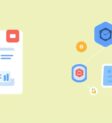
Artificial intelligence is reshaping content creation through the power of AI content automation. Bloggers and digital marketers are now leveraging these intelligent tools to maximize efficiency, elevate quality, and scale their writing efforts with precision. In this article, we’ll delve into the fundamentals and advanced strategies of AI content automation to help you conquer the digital publishing space.
How AI Content Automation Is Transforming Blogging
Artificial intelligence is rapidly redefining the blogging landscape, offering powerful tools that streamline and enhance content creation. AI-powered automation enables bloggers and publishers to generate high-quality articles, product descriptions, and social media posts with unprecedented speed and efficiency. What once required hours of research, drafting, and editing can now be accomplished in minutes, giving content creators the freedom to focus on strategy and innovation.
This transformation is about more than just efficiency. Advanced AI platforms analyze audience trends, optimize SEO, and personalize messaging for various demographics—tasks that were traditionally time-consuming or required large teams. As a result, bloggers produce engaging, relevant, and search-visible content at scale, opening up expanded opportunities for both audience growth and monetization. AI content automation is setting a new gold standard for productivity and is paving the way for scalable success in digital publishing.
What Is AI Content Automation?
AI content automation refers to utilizing artificial intelligence to create, manage, and optimize digital content with minimal human input. For bloggers and marketers, this encompasses automating repetitive writing tasks, generating new topic ideas, personalization for segmented audiences, and simplifying editorial processes. AI tools analyze large data sets to detect emerging trends, propose relevant topics, and generate well-structured content for blogs, social posts, or email campaigns.
The core technologies powering this revolution include natural language processing (NLP), machine learning, and sophisticated data analytics. NLP enables AI to both understand and produce human-like language, while machine learning algorithms refine strategies based on performance metrics. These innovations let you rapidly scale your content production while maintaining consistency and relevancy across channels.
The key benefits of AI content automation for content teams are:
- Increased efficiency and reduced publishing times
- Lowered costs of content creation
- Better audience engagement through personalization
Automation covers the basics, letting you devote more resources to strategy and creative growth. This makes AI content automation an indispensable part of the modern marketer’s toolkit.
Choosing the Right AI Tools for Your Blog
Selecting the best AI tools for your needs begins with assessing your content objectives. Pinpoint the processes that can benefit most—writing, editing, SEO, design, or management. Leading AI solutions to consider include Jasper for writing, Grammarly for style and grammar checks, SurferSEO for content optimization, and Canva’s AI-driven features for imagery.
When comparing tools, check for compatibility with your blogging or CMS platform. Look for integrations, plugins, user-friendly interfaces, learning resources, and support options. Assess the pricing structures for scalability, as your needs will likely grow. For collaborative environments, prioritize platforms with multi-user workflows and version controls.
Make use of free trials or demos to experience features in action, ensuring the real-world fit before committing. Through careful selection, you’ll build an AI toolkit that maximizes quality and efficiency in your blog’s output.
Building Efficient Workflows with AI
Designing a streamlined AI-driven workflow involves organizing content production into cohesive, automated phases. Start with AI-powered research tools to gather keyword ideas, analyze market or audience trends, and build structured outlines. Platforms like TheAgentBot can assist in managing content calendars, delegating tasks, and scheduling posts based on data-driven predictions.
Drafting becomes faster and more consistent using generative AI tools—these accelerate first draft creation while maintaining brand voice and style. Grammar and style editors, such as Grammarly, further polish language and ensure clarity and accuracy. Closing the loop, AI can suggest ongoing improvements by learning from real-time content performance data.
Automated publishing platforms ensure your scheduled content is deployed across multiple distribution channels at optimal times. Integrated analytics dashboards provide actionable insights, supporting continuous process enhancements. Linking each step with the right AI tools reduces manual effort and ensures a smooth journey from ideation to publishing.
Scaling Content Production Without Sacrificing Quality
Scaling your blog’s output doesn’t have to mean lowering your standards—especially when harnessing AI content automation. Start by defining robust editorial guidelines on voice, accuracy, and topical relevance. With automated platforms like Jasper, Copy.ai, and Grammarly, you can rapidly generate outlines, headline options, and error-free drafts—accelerating early-phase production. For workflow strategies tailored to business automation, check out actionable guides like this tutorial on TheAgentBot.
It’s imperative to maintain a rigorous review process. Human editors should always oversee AI-generated drafts for accuracy and to ensure they align with your brand’s values. For example, fintech company Revolut successfully tripled their blog output using an AI-assisted content pipeline—AI managed research and drafting, while the editorial team focused on compliance and voice.
Maximize efficiency by batching related tasks. Use AI to transform long-form articles into social media snippets, email updates, or infographics, letting your expertise shine through added analysis or personal commentary. Regular audits and performance monitoring—using analytics to review engagement and consistency—allow you to refine both AI prompts and editorial workflows for continuous quality improvement.
AI in SEO and Analytics Workflows
Integrating AI with SEO and analytics is a game-changer for optimizing content visibility and measuring results. AI-powered SEO tools can instantly analyze keywords, spot trending topics, and highlight content gaps. Automations such as meta tag generation, on-page optimization, and internal linking (see the full guide on Automate Internal Linking with AI Agents) ensure your articles consistently align with best practices.
Your analytics processes benefit significantly from AI’s ability to identify behavioral patterns, predict top-performing content, and generate actionable recommendations. Seamless integration with major platforms (like Google Analytics) provides a unified dashboard for tracking KPIs and finding optimization opportunities—such as flagging underperforming keywords or highlighting high-converting content paths.
To truly unlock value, build feedback loops where AI continuously fine-tunes your strategies in response to real-world data. By automating reporting and extracting actionable insights, you spend less time analyzing and more time growing your blog’s reach and authority.
Overcoming Common Challenges in AI Content Automation
While AI content automation simplifies much of the publishing process, it also introduces new hurdles that require proactive solutions. Common challenges include data quality issues, vague project objectives, resistance from team members, and the complexity of integrating with existing systems.
Address data quality first—ensure you are feeding your AI models with clean, relevant, labeled data. Regular audits help keep datasets fresh and effective. Set clear objectives and measurable success criteria so your AI projects remain focused and impactful.
To ease transition friction, communicate how AI enhances rather than replaces current roles, and provide comprehensive training to foster buy-in. Improving human-AI collaboration means dividing responsibilities and prioritizing regular, transparent feedback between stakeholders.
Minimize risk by piloting AI tools on specific use cases before a broad rollout. Continually monitor system performance and update algorithms as needed—automation isn’t a one-time setup. Remain vigilant about potential biases or ethical pitfalls, leveraging regular reviews to maintain fairness and reliability.
Ultimately, successful AI content automation depends on active troubleshooting, ongoing education, and a culture of adaptability. For a deeper dive into the business potential of automation, see expert insights in Dubai AI Company for Business Automation.
Conclusion
AI content automation is dramatically changing how bloggers and digital marketers approach content creation. By leveraging the right mix of AI-powered tools and human expertise, teams produce higher-quality content, reach wider audiences, and stay competitive in a rapidly shifting landscape. With robust planning, thoughtful tool selection, and a commitment to continual learning, you’ll harness the power of AI to automate, optimize, and elevate your blog’s presence well into the future.
For further reading on implementing automation strategies in your business, consult guides such as Automate Internal Linking with AI Agents or trusted external resources like Content Marketing Institute.






